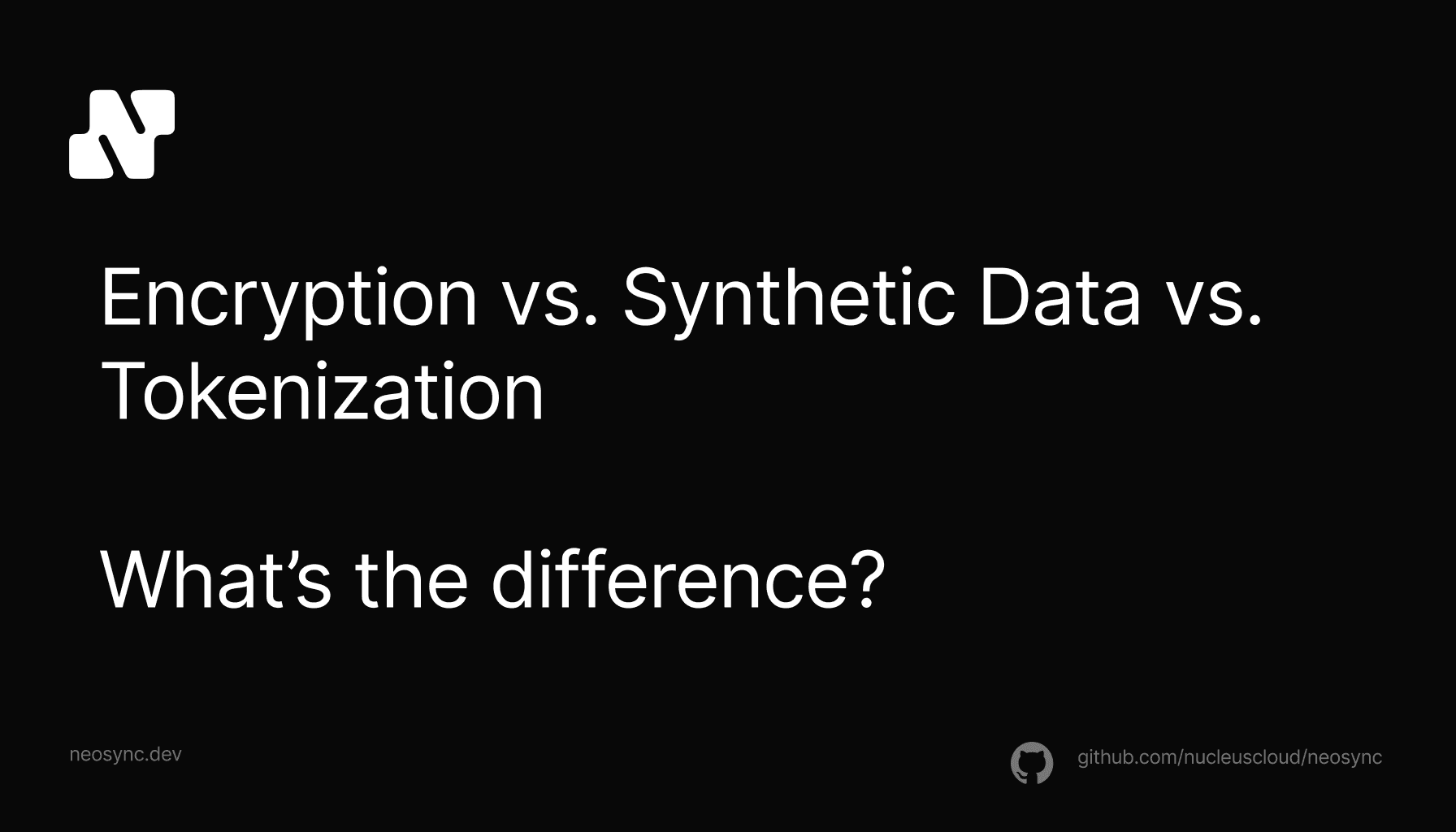
What is the difference between Synthetic Data, Encryption and Tokenization?
What is the difference between synthetic data, encryption and tokenization and what are their use cases?
February 6th, 2024

For many companies, especially startups, getting access to high quality data is difficult. If you're a small company, you likely don't have a lot of real-world data to use for testing your applications and infrastructure. If you're a large company, real-world data often comes with challenges such as privacy concerns, limited availability, and biases. This is where synthetic data emerges as a powerful alternative for small companies and enterprises.
Synthetic data is artificially generated data that closely resembles real-world data but does not contain any actual personal information (PII). It is created in many different ways depending on the type and format of data you need. If you just need basic integer data then something like a random number generator can be used to create a random number. If you need something more complicated like a fake hotel object that includes a name, description, room rates, pictures, etc. then generative models and deep learning algorithms might be required. The goal at the end of the day is to create data that "looks" exactly like the data that you would collect in the real world but is not sensitive and is easily created.
Synthetic data is massively helpful in building and testing applications and training machine learning models among other use-cases. Let's go through the top 4 use-cases of synthetic data.
Today most developers manually create test data. They'll hand write JSON or data into a database and then use that to test their applications. Outside of it being horribly inefficient, developers will usually forget to test for edge cases such as non-ASCII characters, ill-formatted text and more. This is where synthetic data can come to the rescue. Since it's easy and cheap to create, you can create different types of synthetic data that test the happy path as well as edge cases. Overall, this leads to a more resilient and secure application for your customers.
For many companies, especially startups, getting data at scale isn't easy. If you haven't launched your product but want to see how it would perform under pressure, you need a lot of data to be able to replicate that traffic at scale. This is where synthetic data can be really useful. You can easily and quickly create millions of records to test your application and infrastructure and see if it handles the load.
Sensitive data should be protected and not made available to anyone who needs in an organization. This includes engineer teams. So, then how does an engineer get representative data to test their applications? Synthetic data to the rescue! Synthetic data enables developers to build and test applications without requiring access to sensitive real-world data. This protects user privacy and complies with data privacy regulations.
Nowadays, every company is using AI/ML and/or building their own AI/MLAI models. Synthetic data originated from the AI/ML world in order to help train models when engineers didn't have enough real-world data. Some of the main use-cases in AI/ML are:
Training and Validation: Training machine learning models often requires massive amounts of data. Synthetic data can be used to generate large and diverse training datasets, leading to more accurate and generalizable models.
Reducing Data Biases: Real-world data can be biased, leading to biased AI models. Synthetic data can be generated to be unbiased, ensuring fairness and ethical AI development.
Exploring Unseen Scenarios: Synthetic data allows researchers to explore unseen scenarios and test algorithms under conditions not readily available in real-world data. This accelerates research and innovation in AI.
You can see these use-cases being put to play in most industries. From healthcare companies using synthetic data to train models to diagnose tumors to financial services companies using models to detect and quantify risk in their financial positions.
As data privacy concerns continue to rise and the demand for AI/ML grows, developers will need to rely on synthetic data to be build and test their applications as well as train their AI/ML models. Luckily, as AI/ML models get better we can create even better synthetic data to build more resilient and smarter applications.

What is the difference between synthetic data, encryption and tokenization and what are their use cases?
February 6th, 2024

Details the difficulties of logging a user out of an application, and why it's harder than one might think.
February 3rd, 2024
